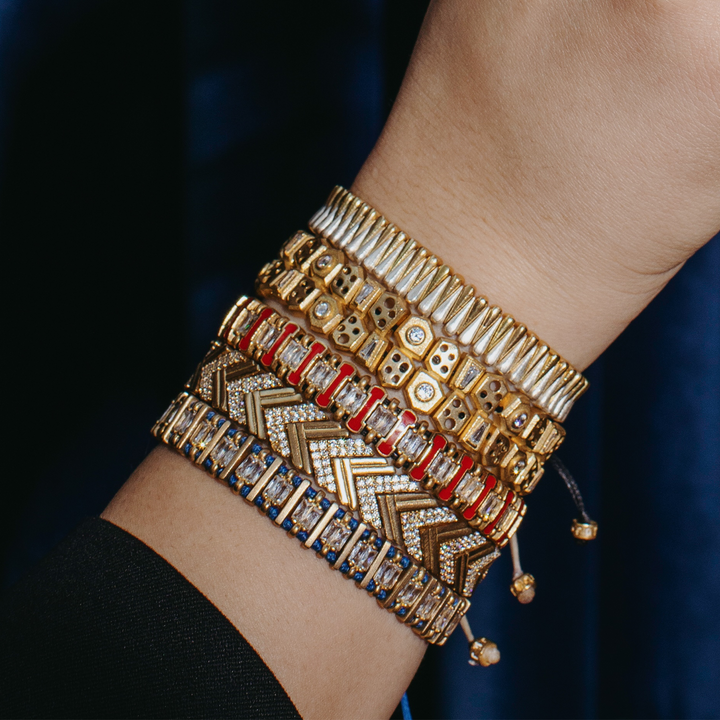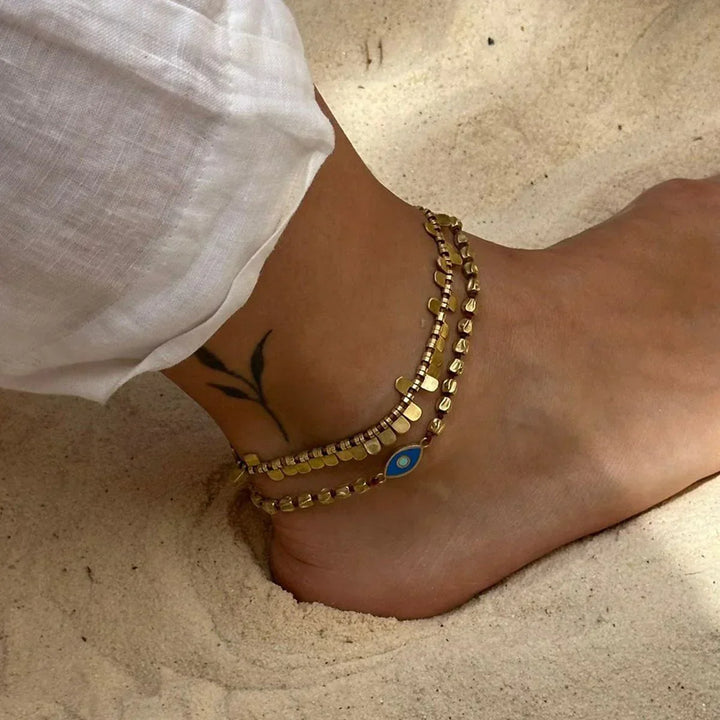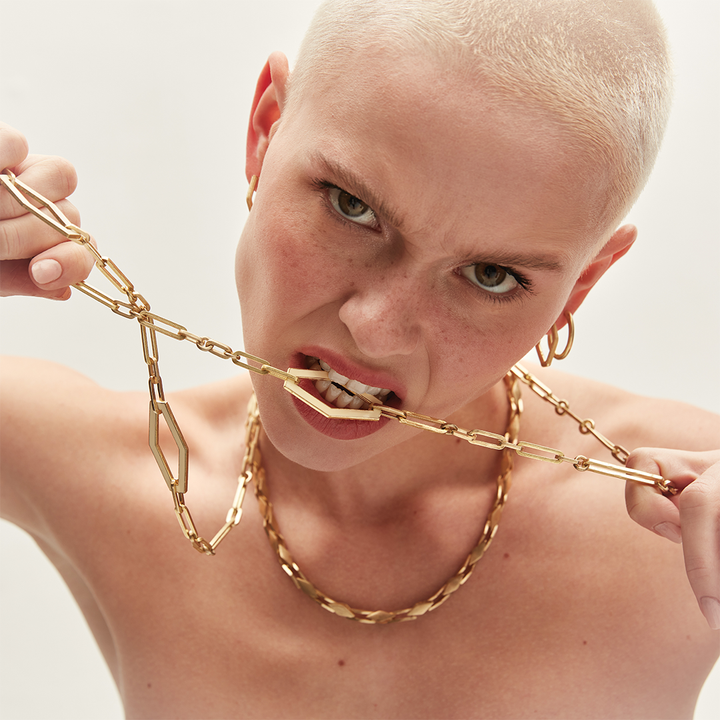Vintage jewelry refers to pieces that are 20 years old or older, with unique designs. Made from high-quality materials, these pieces often reflect the style trends of past eras. Over time, the natural patina adds character, making them rare and valuable. Vintage jewelry carries the elegance of the past and is considered precious by collectors.
Vintage jewelry is not only aesthetically valuable but also carries emotional and historical significance. These pieces reflect the fashion, culture, and craftsmanship of a specific era, making each piece unique in a historical context. For collectors, vintage jewelry represents rare items that increase in value over time. Generally, vintage jewelry prioritizes quality and elegance, with materials, stones, and craftsmanship that tell a different story with each piece. For example, Art Deco jewelry is known for its geometric patterns and diamond details, while Victorian jewelry is noted for its romantic and delicate motifs. This variety makes vintage jewelry appealing to both jewelry lovers and history enthusiasts.
Key Features of Vintage Jewelry:
Belonging to a Past Era: Vintage jewelry pieces are typically 20 years old or more, making them rare items that appreciate in value over time.
Unique Designs: Each vintage piece reflects the aesthetic sensibility of its era, showcasing styles like Art Deco, Retro, or Victorian.
High-Quality Materials: Vintage jewelry is usually made from precious stones (diamonds, emeralds, rubies) and fine metals (gold, silver).
Craftsmanship: Most vintage pieces are made with intricate craftsmanship and possess an exceptional level of quality.
Rarity and Value: Vintage jewelry is often produced in limited quantities, making it a valuable find for collectors and jewelry enthusiasts.
Which Era's Jewelry is Considered Vintage?
Vintage jewelry is typically defined as being 20 years old or older. However, the term "vintage" also depends on the style and design approach of specific periods. Here are some notable periods considered vintage:
Edwardian Era (1901-1915): Known for its delicate craftsmanship and natural motifs. Fine gold craftsmanship and diamond usage are prevalent.
Art Nouveau (1890-1910): Features natural elements, flowing lines, and organic shapes. Silver, gold, and precious stones are common in these pieces.
Art Deco (1920-1939): Recognized for geometric patterns, bold colors, and symmetrical designs. Diamonds, onyx, and emeralds are frequently used.
Retro Era (1940-1950s): Spanning the late 1940s and early 1950s, these pieces focus on bold and large designs, with gold and platinum as the main metals.
Mid-Century Modern (1950-1970): Minimalist designs, clean lines, and functionality dominate this era, with natural stones and creative shapes.
80s and 90s: Jewelry from these decades, especially from the late 90s, is beginning to be recognized as vintage. Bold, statement pieces made with gold and diamonds are common.
Each era has its unique design and material usage, making vintage jewelry valuable both historically and aesthetically.
How to Style Vintage Jewelry?
When styled correctly, vintage jewelry can create a chic and elegant look. Here are some tips for combining vintage jewelry:
Adopt a Minimalist Approach: Vintage jewelry is often bold and unique, so avoid overwhelming the look. Pairing it with a simple, elegant outfit allows the jewelry to stand out.
Match the Era: To create a harmonious look, choose outfits that complement the era of the jewelry. For example, pair Art Deco pieces with a modern dress, or Edwardian pieces with a classic outfit.
Layering Multiple Pieces: When wearing multiple vintage pieces, ensure a balance. For example, if you wear a large vintage necklace, opt for simpler earrings or bracelets.
Color Coordination: Match vintage jewelry, such as gold, silver, or rose gold, with the color of your outfit. For example, gold pieces pair well with warm-toned outfits, while silver pieces complement cooler tones.
With the right styling, vintage jewelry can reflect the elegance of the past while completing a modern, fashionable look.
How to Choose Vintage Jewelry? What to Consider?
When selecting vintage jewelry, consider these important factors to make a satisfying choice both aesthetically and in terms of value:
Condition of the Piece: Vintage jewelry can be worn or damaged over time. Check for scratches, stone loss, or deformation. Well-preserved pieces last longer.
Material Quality: Pay attention to the quality of the metal and stones used. Precious metals like gold, silver, platinum, and valuable stones such as diamonds and emeralds enhance the jewelry's value.
Era and Design: Identifying the era of the piece helps understand its design. For instance, Art Deco jewelry features geometric and symmetrical designs, while Edwardian jewelry is elegant and detailed. Deciding on the era style you prefer makes the selection easier.
Historical Value and Rarity: Some vintage jewelry not only has aesthetic value but also historical significance. Rare and collectible pieces may also serve as investment options. Their authenticity and rarity increase their value.
Seller and Credibility: When buying vintage jewelry, choose a reputable seller. Certified pieces or trusted shops offer guarantees regarding the authenticity and quality of the jewelry.
By selecting pieces that combine the elegance of the past with your personal style, you can make a great choice to complete your collection.
How to Care for Vintage Jewelry?
Cleaning and Maintenance: Be gentle when cleaning vintage jewelry. Avoid using chemical cleaning products. Use a microfiber cloth and soft water for cleaning. Pieces with pearls or glass stones should be kept away from excessive moisture and heat.
Storage: Store jewelry, especially those with precious stones, in their original box or a jewelry case. Dividers in jewelry boxes help keep pieces separate and prevent scratching. Avoid direct sunlight or damp environments.
Avoid Chemicals: Vintage jewelry should not come into contact with perfume, hairspray, or cleaning products, as these chemicals can damage the surface, change colors, or loosen stones.
Regular Checkups and Care: Regularly check stone placement and the strength of connection points, especially for stone-set pieces. Early intervention for any damage or loss can prevent further issues.
By caring for vintage jewelry properly, you can preserve both its aesthetic value and historical significance for years to come.






